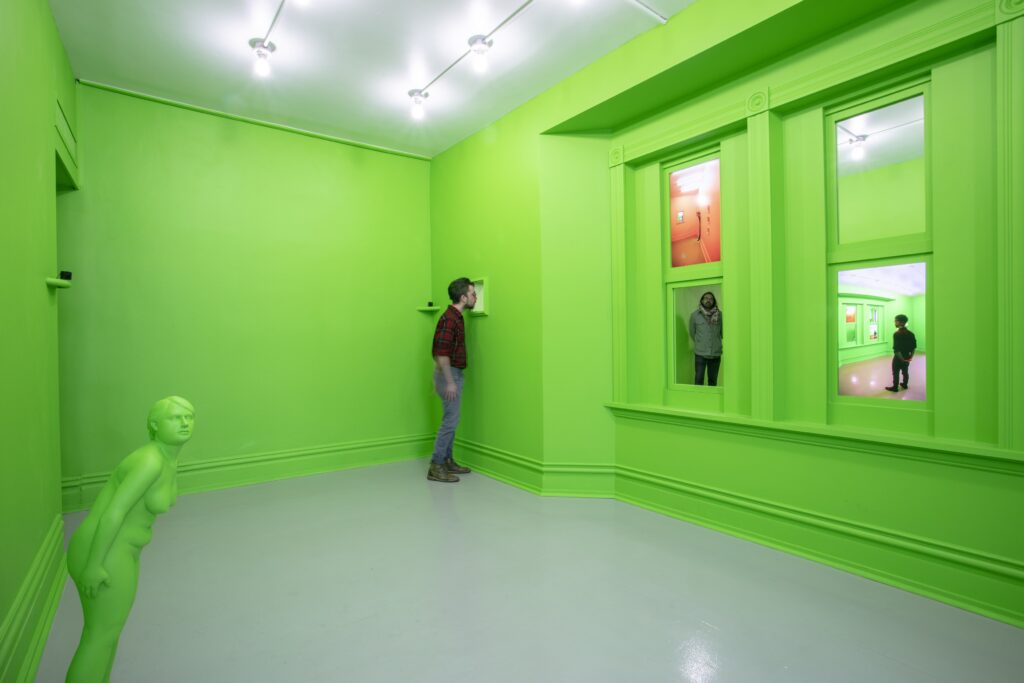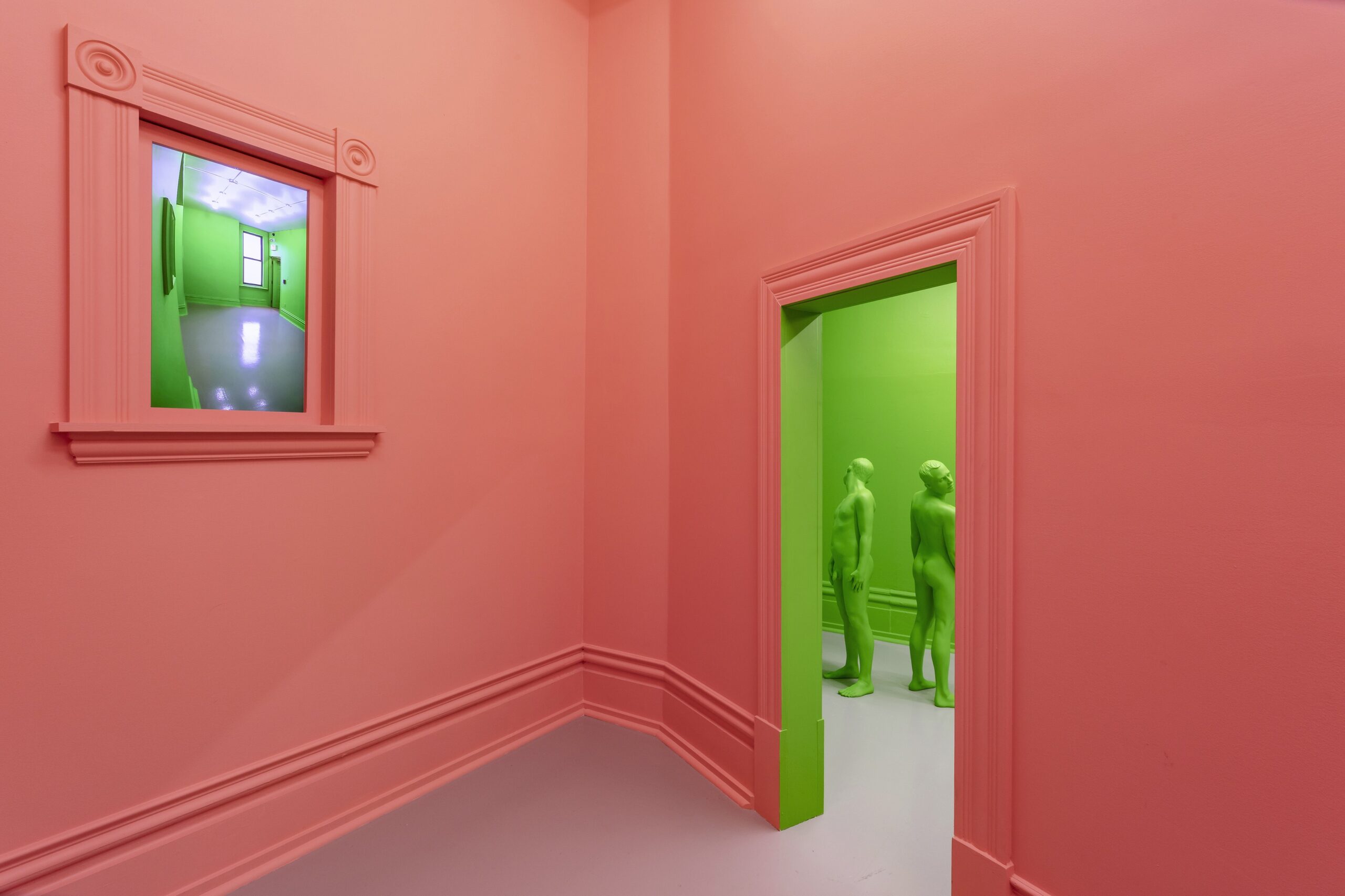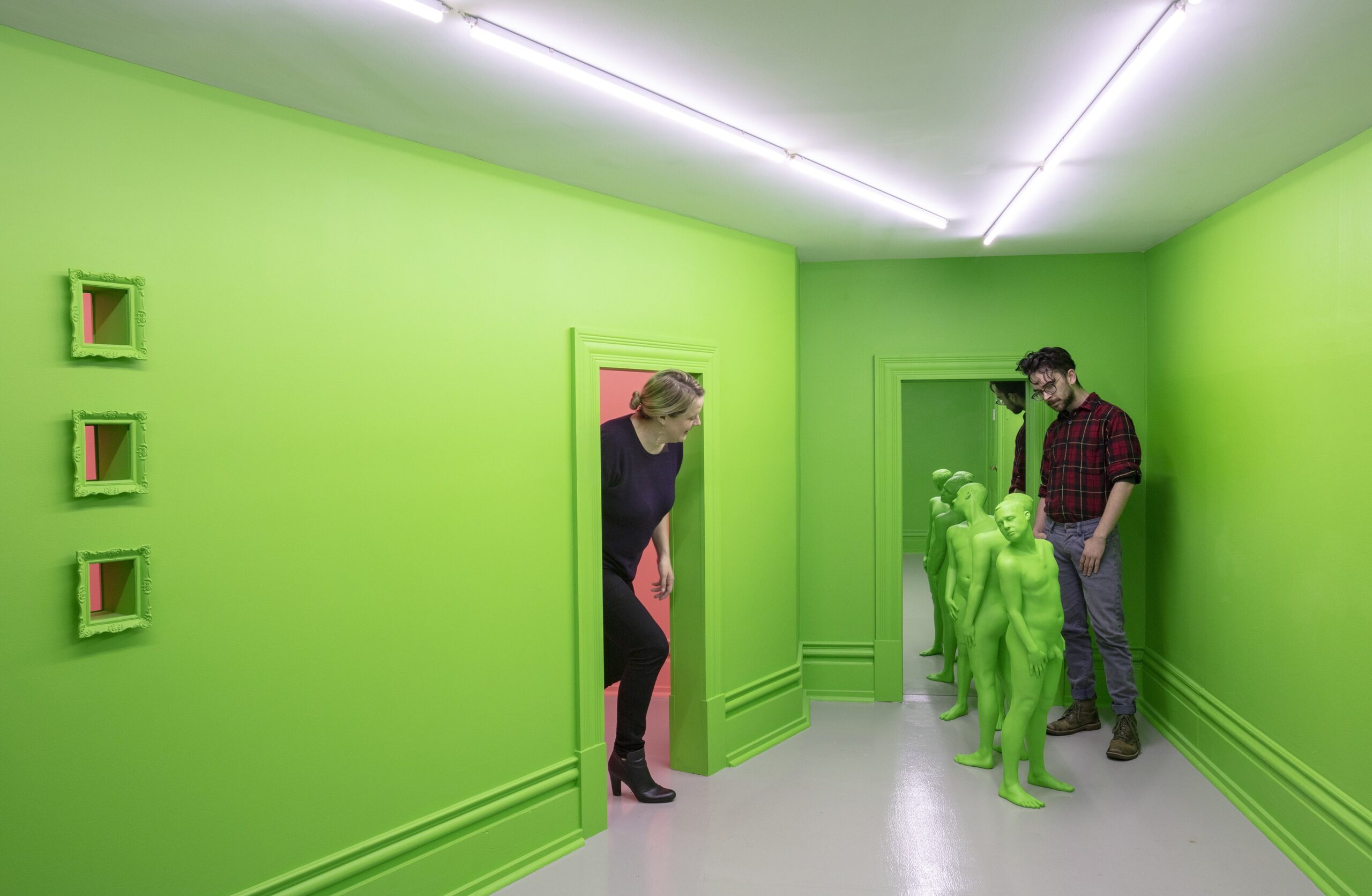
This past August, sculptor Christina A. West was the artist-in-residence at the Mattress Factory in Pittsburgh. An associate professor of art at Georgia State University, she often explores in her work the relationship of the viewer to the sculpted, human form by evoking a sense of the uncanny. Her site-specific installation, Screen, now on view at the museum, involves eight sculptures, three cameras, and three television monitors. Here, West discusses why her installations encourage dialogue, how she portrays the body through sculpture, and how she contends with a world saturated with screens.
“Even though there weren’t any artists in my family, there was an emphasis on making things with your hands and being creative. In high school, when I realized that you could go on to college and get a degree in art, it became clear to me that that’s what I wanted to do. In graduate school, I began making installations that focused on figures and setting up relationships between bodies. I would activate the space by using color—it might be a white-cube gallery with a square of color on the floor, or I would paint the wall the same color as the figures. More recently, my work has focused more on altering the viewer’s experience of the space in relation to what’s happening with the figures.
Screen has two main rooms, both of which I’ve divided with a wall. There are three cameras that feed into monitors located throughout the rooms. All of the cameras are on a 20-second delay—in the instance that you’re in the space with the camera, you don’t see yourself right away. But then 20 seconds later, you do, and it’s you from the past. Because of the delay, there’s a separation between the image of yourself and your actual self. You become an object on the screen. I wanted to create a space that revealed itself slowly. As you step in, you see one thing, and as you move around, another thing reveals itself. You’re implicated in the work, because you keep seeing your image throughout the space. A lot of times with art, we get drawn into this world that the artist has created. I wanted that to happen to some degree but also to pull you back to your reflection within it.
In terms of the bodies, I made them ordinary, like people you would meet on the street. I didn’t want to sculpt gymnastic-like figures or idealized forms. I wanted real bodies that you could relate to. One guy is on the floor just starting to get up and another is looking over his shoulder. Nothing heroic, all pretty common.
The green of the walls is the same color as green screen. I chose it because of its associations with film and theater. I was thinking about how it’s used and how it often suggests temporality—the green screen is removed and replaced with something else, and never makes it to the final production. In Screen, it makes you feel like you’re stepping onto a stage. The pink color to me is suggestive of an interior, bodily color. It’s not necessarily anything—I can’t say, ‘It’s the color of your left ventricle,’ but it reads as fleshy without being an illustration of actual flesh. All of these things that I’m articulating, I think the viewer feels on a subconscious level.”



